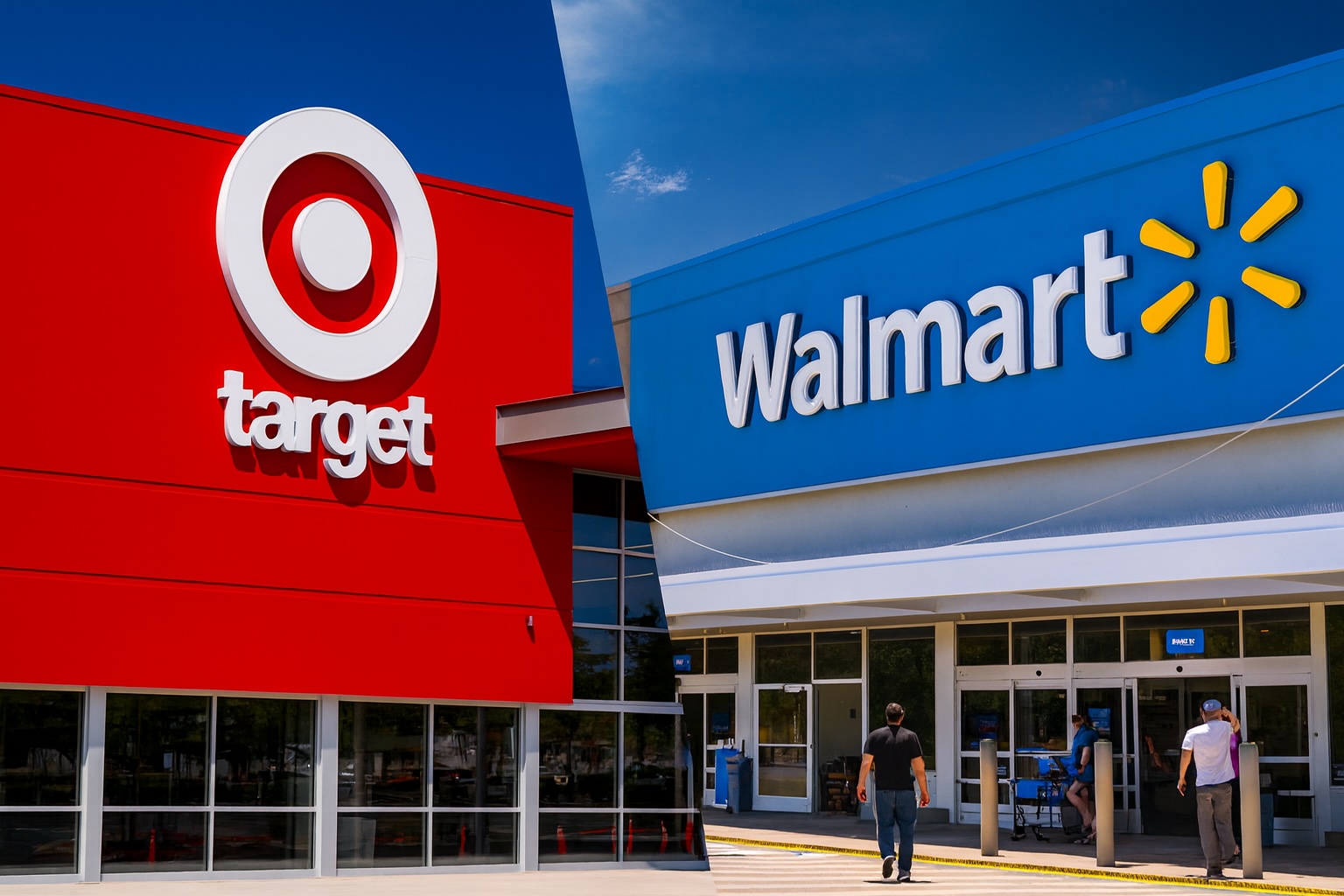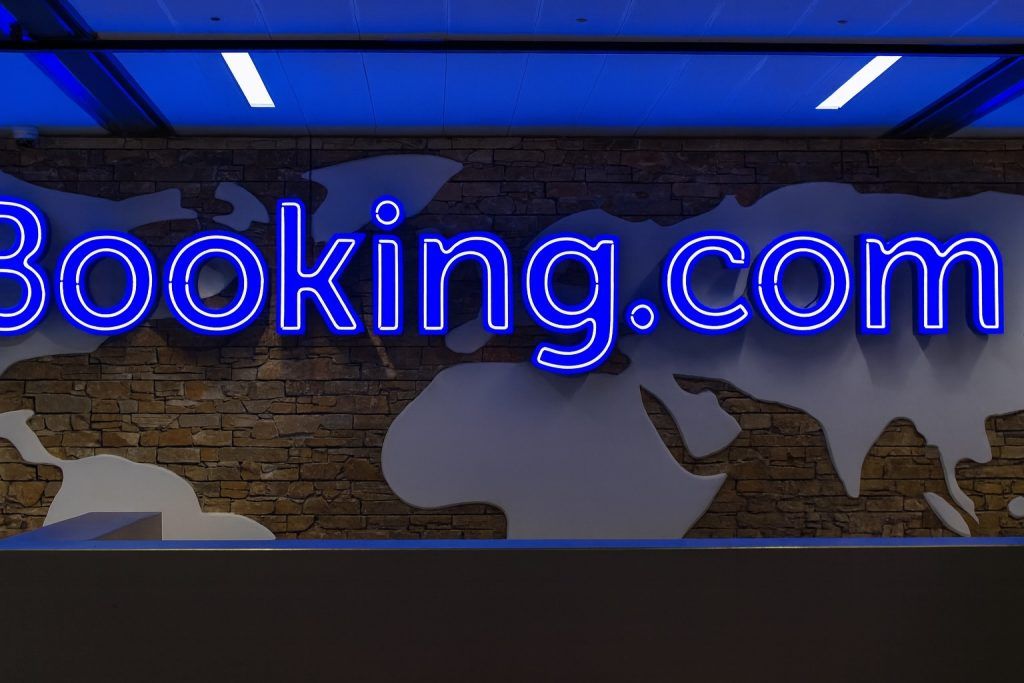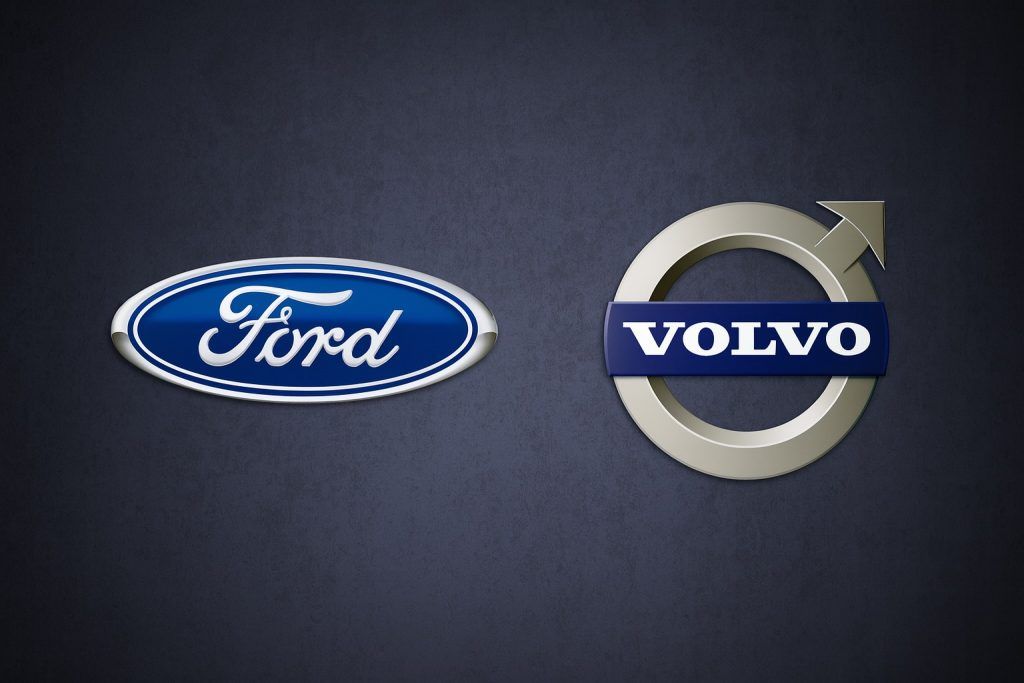- Walmart Surges: Walmart (WMT) shares hit fresh highs this month (around $106–107 on Oct 23) [1], roughly +18% year-to-date. The jump came after Walmart unveiled a ChatGPT shopping integration on Oct. 14, which drove its stock up 3–5% intraday to record levels [2]. CEO Doug McMillon has raised full-year sales and EPS guidance, citing strong same-store sales and booming online growth [3]. Walmart’s U.S. chief John Furner says the chain continues to see “a resilient customer” who is “making really smart choices” on spending [4].
- Target Slumps: By contrast, Target (TGT) shares are at multi-year lows – about $94 on Oct. 23 – down roughly 35% in 2025 [5]. The retailer’s recent quarters have been weak (Q2 net sales –0.9% YoY to $25.2 billion [6]) and investors are skittish after announcing CEO Brian Cornell’s Feb. 2026 exit. When Target named longtime insider Michael Fiddelke as CEO, its stock dipped another ~6% [7]. GlobalData analyst Neil Saunders warned this internal change “does not necessarily remedy the problems of entrenched groupthink” at Target [8].
- Analyst Ratings: Wall Street is largely bullish on Walmart. About 30 of 31 analysts rate WMT a Buy [9], with a consensus 12-month target around $112–115 (≈+10% upside) [10]. Target is rated mostly Hold (38 analysts), with an average price target near $109 (≈+15% upside) [11]. Some forecasters see higher ceilings (Morgan Stanley’s target for TGT is ~$160 [12], Wolfe Research puts WMT at $129), but most expect only modest gains.
- Fundamentals & Dividends: Walmart’s fundamentals are strong. In Q2 FY2026 (ended July), Walmart’s revenue was $177.4B (+4.8% YoY) [13], boosted by 26% e-commerce growth. The company even raised guidance on the quarter’s results [14]. Target’s Q2 sales were flat-to-down, and GAAP EPS fell (from $2.57 to $2.05) [15]. On the plus side, Target offers a high dividend (~4.8–5%), far above Walmart’s ~0.8% yield [16]. That yields makes TGT attractive to income investors, even as the stock trades at a depressed multiple (forward P/E ~12x [17]).
- Holiday Outlook: Retailers warn of a subdued holiday season. U.S. holiday sales are forecast up only ~2–3% this year (down from +4.2% last year) [18]. Online sales are expected to grow ~5.3% [19] as consumers hunt bargains. Walmart has even raised its holiday guidance, while Target has simply maintained its outlook [20] [21]. Adobe’s data team notes shoppers are “dealing with a lot in the broader economy” and “leaning on the online sector to get better deals” [22]. In practice, that means heavy promotions (like Walmart’s recently launched “Circle Week” sale) and margin pressure on discretionary items at stores like Target.
Walmart: AI, E-Commerce and Upside
Walmart’s recent stock strength is being fueled by innovation and solid sales. The ChatGPT deal this month was widely hailed: OpenAI’s Sam Altman himself praised the integration as “one way AI will help people every day” [23]. UBS analyst Michael Lasser noted it should add “incrementality and differentiation vs. the rest of retail” [24]. Indeed, Walmart’s stock hit an all-time intraday high (~$107) right after the announcement [25]. TechStock² (TS2) analysis reports that investors see Walmart’s “diverse engines – robust grocery/value sales, surging e-commerce, fast-growing ad and membership income” as a path to 3–5% annual revenue growth [26].
Walmart’s earnings have matched this optimism. Q2 sales beat expectations and lifted guidance [27]. Memberships (Walmart+) and its advertising arm both grew strongly [28]. The company’s 52-week high implies a forward P/E around 36× [29], a lofty valuation. Most analysts argue it’s justified by above-trend growth. In fact, nearly all (~97%) of surveyed analysts rate WMT a buy [30]. As TS2 notes, the “consensus forecasts assume modest continued gains” (roughly 3–4% sales and ~3% EPS growth in FY2026) [31], implying Walmart will keep growing steadily without dramatic spikes.
Walmart’s management emphasizes shopper resilience. CEO John Furner said U.S. customers are “resilient” and “smart” about budgeting [32]. CFO John Rainey similarly stressed that core customers are “focused on value” despite inflation [33]. In practical terms, Walmart’s strategy has been to use its 4,600 U.S. stores as mini-fulfillment centers, boosting same-day delivery and Walmart+ subscriptions [34] [35]. This omnichannel edge helped Walmart gain market share even when consumer sentiment was weak: Reuters noted Walmart’s customers span all income levels, and the chain raised forecasts in August for exactly that reason [36] [37].
However, some analysts urge caution. RBC’s Steven Shemesh pointed out that Walmart’s Q2 gross margins disappointed – “we didn’t get” the expected beat – causing a short-term stock pullback [38]. TS2 also warns that with a stretched valuation “any major disappointment (e.g. slower growth or higher tariffs) could be punished” [39]. Indeed, looming 100% tariffs on many Chinese imports pose a risk to all U.S. retailers; management has acknowledged higher costs could require price hikes [40] [41]. That said, most brokers remain upbeat on WMT’s long-term outlook. As TS2 summarizes: “Walmart is seen as a core defensive retail holding, likely to deliver modest but reliable gains. Most analysts expect mid-single-digit growth and see the stock as a buy” [42].
Target: High Yield vs. Hard Challenges
By contrast, Target’s stock story is one of caution. Despite its blue-chip status, TGT has underperformed badly. The TS2 report notes Target stock has fallen roughly 35% this year [43] (and ~23% over five years) even as competitors thrived [44]. Last quarter, Target’s revenue dipped slightly (same-store sales down 1.9%) and profit margins slid to a 5-year low [45]. It blamed this on heavy markdowns and rising costs from canceled orders.
Investors are worried about Target’s turnaround plan. Naming Michael Fiddelke as the new CEO – an insider with 20 years at the company – did not reassure the market. “We have very mixed feelings about this appointment,” GlobalData’s Neil Saunders said. As TS2 recounts, Saunders warned that an internal CEO “does not necessarily remedy the problems of entrenched groupthink” that have plagued Target [46]. Similarly, shareholder Charles Sizemore (who recently sold his stake) bluntly concluded “no turnaround will be happening on a reasonable timeline” [47]. With sales recovery uncertain, Target’s shares have languished near decade lows (around $85–90).
On the upside, Target does have strengths. It’s considered a “Dividend King” with 54 straight years of hikes, and its current yield (~5%) is roughly a decade high [48] [49]. TS2 notes that some analysts see this as a buffer – Guggenheim cut Target’s target from $155 to $115 (in May 2025) but still saw 15–20% upside [50], thanks to the yield and cheap P/E (~12x). In fact, most sell-side models predict minimal sales growth ahead (flat-to-low-single-digit declines) and only modest profit gains. TS2 finds the average 12-month TGT target is about $109 [51], roughly 15% above current levels. A few bulls (like Morgan Stanley) have targets near $160, but Bernstein and RBC are more bearish, and even CFRA has downgraded Target to Hold [52].
The consensus takeaway is that Target is a turnaround play with value appeal. TS2 concludes that analysts generally expect little near-term stock rally; potential total returns (including dividends) might be 10–20% if all goes well [53]. Importantly, TS2 and Reuters highlight that Target has structural hurdles – inventory snarls, missed merchandising, and a pullback in its once-stellar culture – which need fixing before growth returns [54] [55]. As one analyst noted, Target “used to be very attuned to consumer demand” but “has lost its grip on delivering for the American shopper” [56]. In short, Target’s cheap stock and fat dividend beckon value investors, but most experts say patience (and a clear turnaround) will be required.
Holiday Season & Market View
Broader retail trends favor Walmart’s model right now. Consumers under inflation and trade-war pressures are trading down to cheaper essentials – a box Walmart ticks – and avoiding big-ticket discretionary buys (Target’s specialty). Adobe Analytics projects holiday online growth of only +5.3% this year [57], and forecasts show Walmart and Target holding guidance as consumers “hunt for deeper discounts” [58]. Indeed, Walmart’s pricing power and e-commerce muscle should help it weather any consumer belt-tightening. The Bentonville giant can lean on its 4,600 U.S. stores, Walmart+ same-day delivery and even AI chat (ChatGPT) to keep shoppers. Target’s niche is more premium brands and curated deals – an attractive proposition in boom times but vulnerable now.
Looking at the coming months, analysts see Walmart as a safer bet for steady growth, while Target is more of a speculative turnaround. TS2’s analysis sums it up: Walmart is viewed as a “moderate buy” or buy/hold for the long term [59], whereas Target’s low valuation could reward brave investors if traffic picks up. Given the news cycle, many experts currently favor Walmart’s tech-driven strategy and scale. As one tech-stock commentary put it, Walmart’s recent moves – from AI integration to drone delivery tests – show it aims to stay “ahead” in retail [60] [61]. By contrast, Target must first prove it can get shoppers back into stores.
In the end, the choice between Walmart and Target boils down to risk preference. Walmart is riding momentum with solid fundamentals and trading near all-time highs, but its stock isn’t cheap. Target offers a 5%+ yield and double-digit upside if a turnaround happens, but faces an uphill climb. With Wall Street nearly unanimous on Walmart’s steady path (analysts note “mid-single-digit” growth ahead [62]) and only modest consensus on Target, many investors lean toward the retail giant. Yet for contrarian bargain hunters, Target’s beaten-down price still “remains on value investors’ radar” [63].
Sources: Company filings; Reuters, Motley Fool/Nasdaq and TechStock² analysis [64] [65] [66]; Holiday forecast studies [67] [68]; Analyst reports. All data and quotes are as of Oct. 23, 2025.
References
1. ts2.tech, 2. ts2.tech, 3. ts2.tech, 4. www.reuters.com, 5. www.nasdaq.com, 6. ts2.tech, 7. www.reuters.com, 8. www.reuters.com, 9. ts2.tech, 10. ts2.tech, 11. ts2.tech, 12. ts2.tech, 13. ts2.tech, 14. ts2.tech, 15. ts2.tech, 16. www.nasdaq.com, 17. ts2.tech, 18. www.reuters.com, 19. www.reuters.com, 20. www.reuters.com, 21. www.reuters.com, 22. www.reuters.com, 23. ts2.tech, 24. ts2.tech, 25. ts2.tech, 26. ts2.tech, 27. ts2.tech, 28. ts2.tech, 29. ts2.tech, 30. ts2.tech, 31. ts2.tech, 32. www.reuters.com, 33. ts2.tech, 34. www.nasdaq.com, 35. ts2.tech, 36. www.reuters.com, 37. www.reuters.com, 38. www.reuters.com, 39. ts2.tech, 40. www.reuters.com, 41. ts2.tech, 42. ts2.tech, 43. www.nasdaq.com, 44. www.reuters.com, 45. www.reuters.com, 46. www.reuters.com, 47. www.reuters.com, 48. ts2.tech, 49. www.nasdaq.com, 50. ts2.tech, 51. ts2.tech, 52. ts2.tech, 53. ts2.tech, 54. www.reuters.com, 55. ts2.tech, 56. www.reuters.com, 57. www.reuters.com, 58. www.reuters.com, 59. ts2.tech, 60. ts2.tech, 61. ts2.tech, 62. ts2.tech, 63. ts2.tech, 64. ts2.tech, 65. www.reuters.com, 66. ts2.tech, 67. www.reuters.com, 68. www.reuters.com







